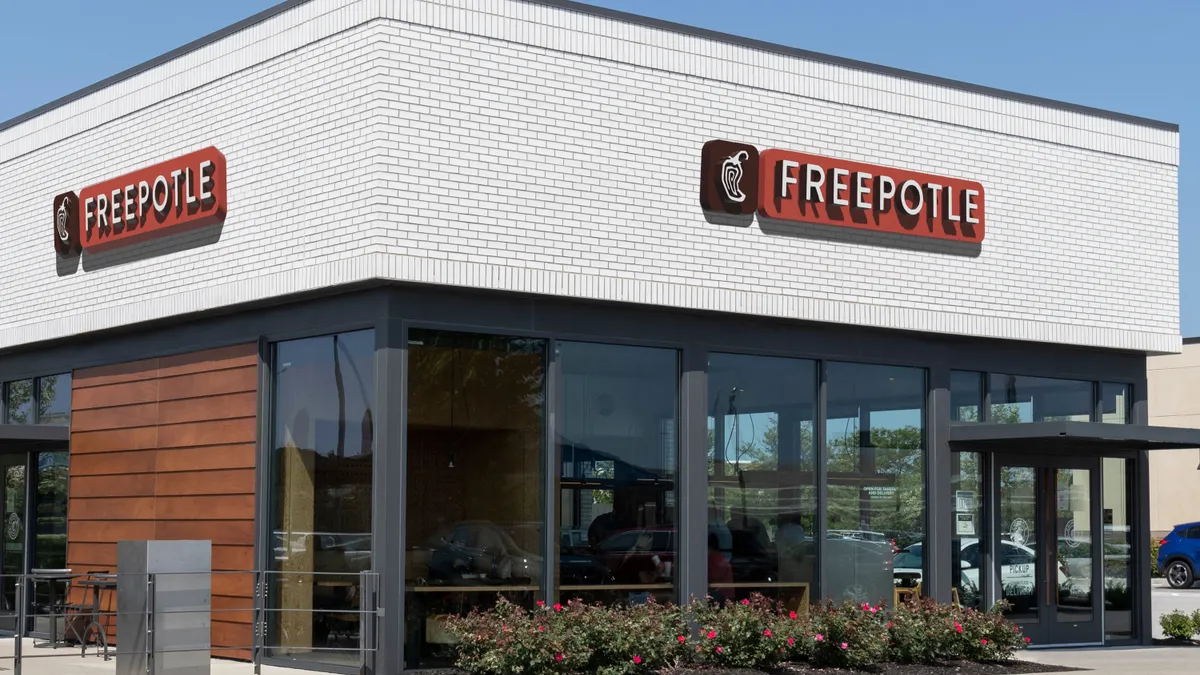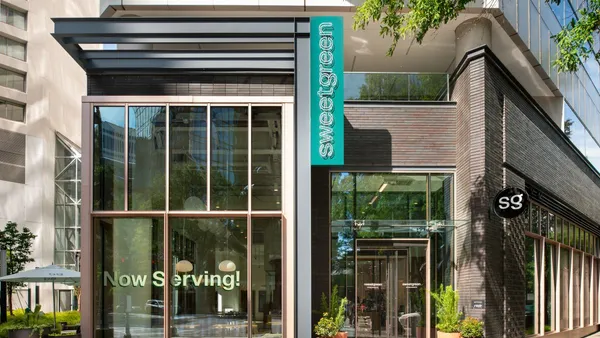Dive Brief:
- Chipotle’s comparable sales were up 10.9% while total revenue was up 17.2% to $2.4 billion during the first quarter, the company said Tuesday.
- In-restaurant sales increased 22.9% year over year, while digital sales made up 39.3% of food and beverage sales. Comparatively, in-restaurant sales were up 17.5% during Q4.
- Transaction growth turned positive during the quarter, CFO Jack Hartung said Tuesday during the company’s earnings call, despite the chain’s 10% menu price increase,
Dive Insight:
CEO Brian Niccol credits transaction growth to changes including running more efficient restaurants, menu innovation and the company’s rewards program. Chipotle released a Fajita Quesadilla and Chicken Al Pastor during the quarter, which helped drive customer traffic. Chipotle’s rewards program also grew to 33 million members during the quarter, driven in part by its Freepotle campaign. This program gives rewards members 10 personalized free rewards throughout the year, Niccol said.
Operations have also benefited from various initiatives, including Project Square One, which included bringing back in-person training for employees. Chipotle is also changing how labor is deployed on its digital and frontlines during busy times. Previously, managers were pulling employees off the frontline when digital make lines were busy, but that ended up impacting throughput.
The company is testing smarter pickup times based on sales and deployment levels in different markets. So far, results have shown improved throughput on the frontline without impacting the digital make line. The chain is also extending its test of a new grill that more quickly and consistently cooks chicken and steak to 10 additional restaurants, Niccol said.
Chipotle’s foot traffic was up 27% during the first quarter year over year, according to data from Gravy Analytics. Fast casual chains in general increased foot traffic during the first quarter compared to the end of last year, which Jolene Wiggins, CMO at Gravy Analytics, said could be due to consumer spending habits changing.
“It’s possible that consumers were cutting back on non-essential spending during the holiday season and redirecting their funds toward items like groceries and gifts,” Wiggins wrote in an email to Restaurant Dive. “However, the recent rise in foot traffic to fast-casual restaurants suggests that consumers may be more willing to spend on dining out now that the holiday season is over and some financial pressures have subsided.”
Chipotle’s same-store sales were up in the double-digits during Q1
Chipotle’s weekly traffic was up during the quarter and consistently outperformed the fast casual category, according to Placer.ai data. Even during Easter week, when traffic was down 10.5% for all of fast casual, Chipotle’s weekly traffic was only down 6.8%, comparatively. Chipotle’s loyalty program is helping drive repeat business, especially for dine-in visits, Placer.ai said. During the last quarter, 32.3% of Chipotle in-person guests visited at least twice per week compared to 30.8% of visitors during the year-ago quarter.
“Wrapped up with Chipotle’s growth is a commitment to innovation, including investments in the highly successful Chipotlanes — fully digital drive-thrus – and most recently, a sustainable restaurant design that is to feature prominently in future locations,” Placer.ai said.
Chipotle opened 41 restaurants, of which 34 were Chipotlanes, during the quarter, according to the brand’s earnings release. It also opened two restaurants during the quarter that use all-electric equipment and systems to maximize energy efficiency. The sustainable design leverages rooftop solar wherever possible.
Traffic, which improved across both low-income and high-income consumers (those earning $100,000 or more) is likely to be positive going forward, Sharon Zackfia, William Blair partner and group head of consumers section, said in a report emailed to Restaurant Dive.
“Looking ahead, we continue to see the potential for further traffic gains as the company enters high selling season in the spring and summer given improved staffing levels, lower turnover, and better overall labor deployment,” she said.












